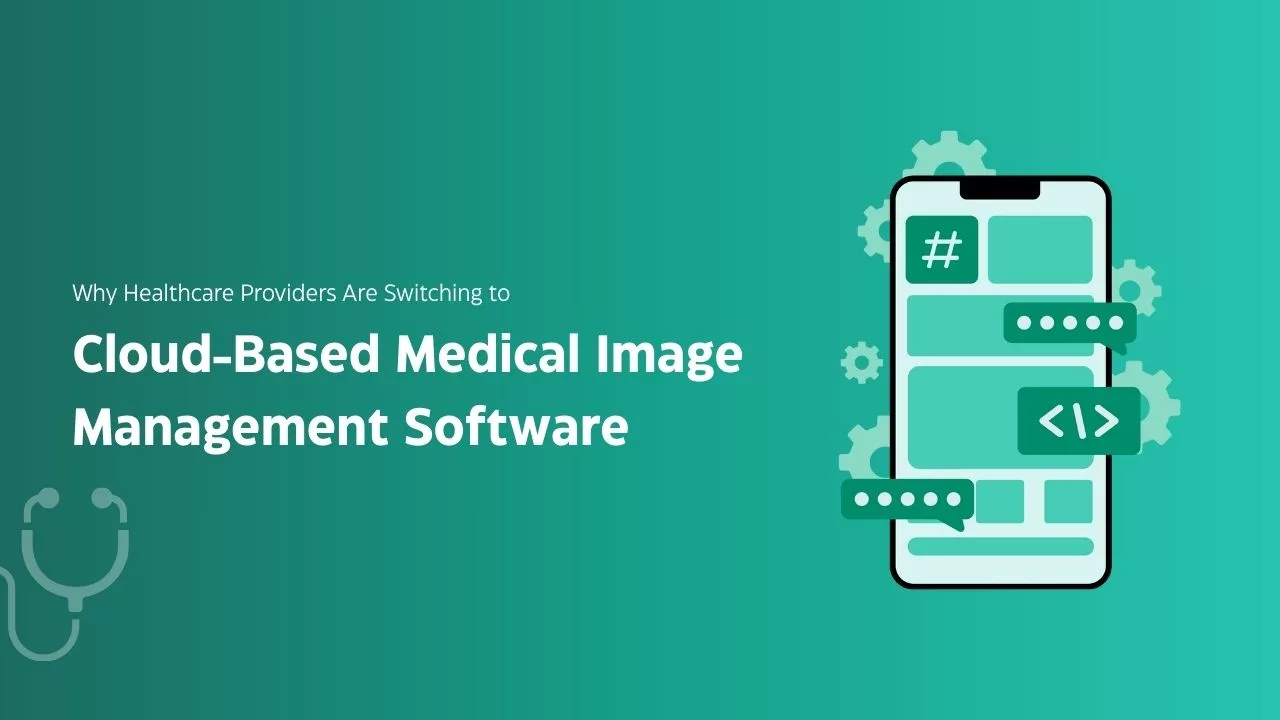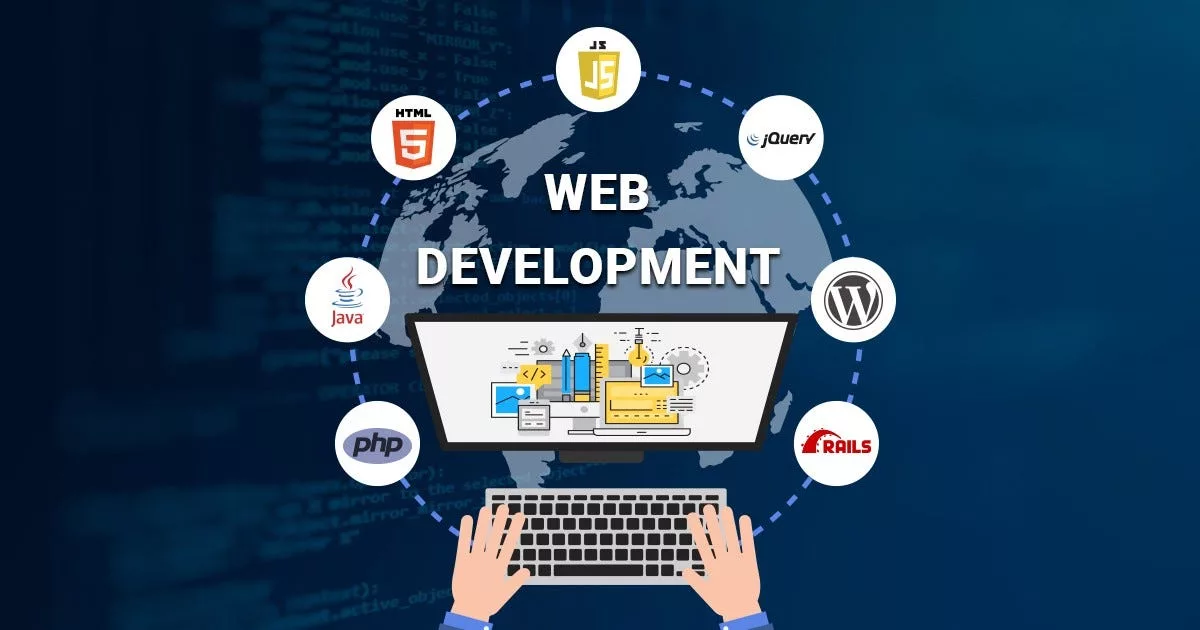In the bustling world of e-commerce, a new player has emerged, quietly revolutionizing how we think about online shopping. This silent juggernaut, known as “Ghost Commerce,” is not as spooky as it sounds, but it is definitely making waves. Before diving deep into the mechanics and intricacies of Ghost Commerce, let’s take a moment to demystify this concept and understand its significance in today’s fast-paced market.
- What is Ghost Commerce?
- How Ghost Commerce Works?
- Top 5 Key Components of a Ghost Commerce Platform
- Top Benefits of Ghost Commerce
- How to Get Started with Ghost Commerce
- Step 1. Understanding Your Business Requirements
- Step 1. Selecting the Right Ghost Commerce Platform
- Step 2. Creating a Seamless Integration Plan
- Step 3. Building a Skilled Team
- Step 4. Developing a Robust Fulfillment Strategy
- Step 5. Testing and Quality Assurance
- Step 6. Planning for Customer Education
- Step 7. Ensuring Compliance and Security
- Step 8. Setting Up Analytics and Reporting
- Step 9. Creating a Marketing Strategy
- How to Integrate Ghost Commerce into Your Business
- How to Make Sales with Ghost Commerce
- Successful Ghost Commerce Strategy to Grow Fastly
- Potential Challenges in Implementing Ghost Commerce
- Reasons Why Ghost Commerce Could be the Future of E-commerce
- Top 5 Examples of Ghost Commerce Businesses
- Tips for Maximizing Earnings with Ghost Commerce
- Final Thought
- FAQs Related to Ghost Commerce
What is Ghost Commerce?
Ghost Commerce refers to the backend frameworks and invisible processes that empower online stores to manage and fulfill orders without the need for a traditional brick-and-mortar presence. Imagine it as the unseen hand that moves the gears of the online retail world, from inventory management to shipment, all without a physical footprint that customers can see.
The Evolution of Ghost Commerce
Over the years, Ghost Commerce has evolved from a mere buzzword to a sophisticated ecosystem supporting the e-commerce industry. It’s a product of the digital age, where speed, efficiency, and invisibility are not just desired but expected.
Related Blogs: Budget Tips To Set Up Your E-commerce Business For Growth
How Ghost Commerce Works?
At its core, Ghost Commerce operates through a series of digital and logistical platforms that manage online transactions from the shadows. It’s the secret sauce that allows businesses to scale quickly, adapting to the ebb and flow of consumer demands without the need for a physical warehouse or store.
- Invisible Inventory Management: Ghost Commerce utilizes sophisticated software to manage inventory levels, predict stock needs, and reorder products automatically. It operates behind the scenes, ensuring that the right products are available at the right time without manual intervention.
- Seamless Order Processing: Once an order is placed, Ghost Commerce systems kick into gear, processing the order through invisible workflows. Everything from order confirmation to picking and packing is handled through automated systems that ensure accuracy and speed.
- Smart Logistics Coordination: Ghost Commerce isn’t just about selling; it’s also about getting the product to the customer. It coordinates with various shipping services and logistics providers to find the fastest and most cost-effective delivery routes.
- Customer Interaction without Interaction: Though customers may never interact directly with the Ghost Commerce system, it’s always working for them. From providing order updates to handling returns, Ghost Commerce maintains customer satisfaction without needing a storefront.
- Data-Driven Decision Making: At the heart of Ghost Commerce is data analytics. By continuously analyzing sales patterns, customer behavior, and market trends, Ghost Commerce platforms help businesses make informed decisions without guesswork.
Also Read: Top Tech Skills that Employers Seek in 2025
Top 5 Key Components of a Ghost Commerce Platform
A robust Ghost Commerce platform is more than just a website with a shopping cart. It’s a finely-tuned machine with several critical components working together to create a seamless backend operation. Here are five key elements that are essential to any effective Ghost Commerce system:
1) Inventory Management Systems
At the heart of Ghost Commerce is inventory management. This system keeps track of stock levels in real-time, ensuring that what customers see online accurately reflects what’s available. It prevents overselling and helps businesses plan for restocking.
2) Order Processing and Fulfillment Software
Once a customer places an order, the order processing system kicks in. It’s designed to handle everything from payment processing to the logistics of getting the product out the door. This software often includes features for packing, shipping, and tracking, which are crucial for maintaining customer satisfaction.
3) Customer Relationship Management (CRM) Tools
CRMs are essential for managing customer data and interactions. They help businesses personalize the shopping experience, manage marketing campaigns, and maintain communication with customers throughout the buying journey.
4) Advanced Analytics and Reporting
Data is invaluable in the e-commerce space. Ghost Commerce platforms need advanced analytics to track performance, understand customer behavior, and make informed business decisions. Reporting tools turn raw data into actionable insights.
5) Integrated Payment Gateways and Security Protocols
Last but certainly not least, secure payment gateways are crucial for processing transactions safely and efficiently. In conjunction with robust security protocols, they ensure that both the business and its customers are protected from fraud and theft.
Our Trending Blog: What is Amazons GPT44x and How Does it Work?
Top Benefits of Ghost Commerce
In the digital marketplace, Ghost Commerce stands as a pillar of innovation and efficiency, offering a myriad of advantages for businesses that embrace its capabilities. From cost savings to enhanced customer satisfaction, let’s delve into the array of benefits that this invisible commerce engine offers.
Streamlining Operations
By utilizing advanced software and technologies, Ghost Commerce enables businesses to automate their supply chain, order processing, and fulfillment operations. This streamlining results in significant time and cost savings, allowing companies to focus on growth and customer service rather than the nitty-gritty of logistics.
Enhancing Customer Experience
Ghost Commerce systems often include sophisticated customer relationship management (CRM) tools that provide a personalized shopping experience. This can lead to increased customer loyalty and repeat business, as shoppers appreciate the ease and attentiveness of their interactions with the retailer.
Scalability and Flexibility
The scalability and flexibility offered by Ghost Commerce are unparalleled. Businesses can easily handle peaks in demand, such as during the holiday season, without the need for physical expansion. This adaptability is crucial for businesses that experience fluctuating sales volumes.
Reducing Overhead Costs
With no need for physical storefronts or large warehouses, businesses can significantly reduce their overhead costs. Ghost Commerce allows for the operation of ‘dark stores’ or fulfillment centers that are optimized for online sales, not foot traffic, thereby cutting down on retail space expenses and associated overheads.
Facilitating International Expansion
Ghost Commerce simplifies the process of reaching international markets. With the right digital infrastructure, businesses can sell to customers around the globe without the need for a physical presence in those countries, enabling them to expand their reach and tap into new revenue streams.
Data-Driven Decision Making
The use of advanced analytics in Ghost Commerce platforms provides businesses with valuable insights into customer behavior, inventory levels, and market trends. This data-driven approach allows for informed decision-making, helping businesses to optimize their strategies and operations for maximum efficiency and profitability.
How to Get Started with Ghost Commerce
Starting with Ghost Commerce is a big step. Let’s make it easy and get the basics right from the start. Here’s your simple guide to kicking things off.
Step 1. Understanding Your Business Requirements
Before jumping into Ghost Commerce, it’s crucial to have a clear understanding of your business requirements. This includes knowing your inventory size, average order volume, and customer service needs. Tailoring a Ghost Commerce solution that fits these requirements is the first step towards a successful implementation.
Step 1. Selecting the Right Ghost Commerce Platform
Not all Ghost Commerce platforms are created equal. It’s important to choose a platform that can scale with your business, offers the features you need, and integrates with your current systems. This might involve some research and comparison of the leading solutions in the market.
Step 2. Creating a Seamless Integration Plan
Integration is often the most challenging aspect of adopting a new commerce system. Your integration plan should include a detailed timeline, a clear outline of the technical steps required, and contingency plans for potential disruptions to your service.
Step 3. Building a Skilled Team
Implementing Ghost Commerce may require a team with a specific skill set, including IT professionals who are familiar with the chosen platform and customer service staff who can handle inquiries related to the new system. Building or training this team is a critical step in the process.
Step 4. Developing a Robust Fulfillment Strategy
Your fulfillment strategy should be robust enough to handle the complexities of online orders, returns, and exchanges. This includes setting up efficient processes for picking, packing, and shipping, as well as managing inventory levels to prevent stockouts or overstock situations.
Step 5. Testing and Quality Assurance
Before going live, it’s essential to thoroughly test the Ghost Commerce setup to ensure that every component works as intended. Quality assurance processes should be in place to check the performance of the platform under different scenarios and loads.
Step 6. Planning for Customer Education
Your customers will need to know how to navigate any changes in the shopping process. Plan for customer education through FAQs, tutorials, or direct communication to ensure a smooth transition and maintain customer satisfaction.
Step 7. Ensuring Compliance and Security
Make sure that your Ghost Commerce platform is compliant with industry standards and regulations, particularly those related to data protection and privacy. The security of your platform should be a top priority to protect your business and your customers.
Step 8. Setting Up Analytics and Reporting
Implement analytics and reporting tools to monitor the performance of your Ghost Commerce operations. These insights will allow you to make data-driven decisions to improve efficiency and customer satisfaction over time.
Step 9. Creating a Marketing Strategy
Finally, a marketing strategy to promote your new Ghost Commerce capabilities can inform existing customers and attract new ones. Highlight the benefits and new features that your updated system brings to enhance their shopping experience.
Also read: Top Virtual Reality Headsets for Schools & VR Educational Apps
How to Integrate Ghost Commerce into Your Business
Integrating Ghost Commerce into an existing business structure is a nuanced process that requires careful planning and execution. Here are the steps to ensure a smooth integration:
Choosing the Right Technology Partners
Finding the right technology partners is crucial for a successful Ghost Commerce integration. It’s about selecting those who not only offer advanced solutions but also align with your business model and can scale with your growth. Compatibility with your existing systems is a must to avoid any costly overhauls down the line.
- Evaluating potential technology partners for Ghost Commerce solutions
- Importance of compatibility with existing systems
- Long-term support and scalability considerations
Data Migration and System Integration
Migrating data to a new Ghost Commerce platform should be handled with precision to avoid data loss or corruption. This step is often the backbone of the integration process, connecting the new commerce systems with the existing databases and customer management systems. Rigorous testing ensures the integrated system functions as a single, cohesive unit.
- Strategies for a seamless data migration process
- Ensuring system integration without disrupting business operations
- Testing and validation of the integrated systems
Customization and Personalization
The power of Ghost Commerce lies in its ability to be customized. Tailoring the system to meet the specific needs of your business can give you a competitive edge. Personalization capabilities, powered by AI, can lead to a more engaging customer experience, driving loyalty and repeat business.
- Tailoring the Ghost Commerce platform to fit unique business needs
- Implementing features for personalized customer experiences
- The role of AI and machine learning in customization
Training and Development
Your team needs to be well-versed in the new systems. This means investing in comprehensive training and ongoing development to ensure they can leverage the new tools effectively. The human element cannot be overlooked; the technology is only as good as the people using it.
- Preparing your team for the transition to a Ghost Commerce platform
- Development programs for continuous learning and adaptation
- Leveraging expert knowledge and resources
Monitoring and Optimization
Once the Ghost Commerce system is up and running, continuous monitoring is key. Performance metrics should be established to gauge the system’s efficiency and effectiveness. Regular optimization based on data-driven insights can lead to better resource management and customer service.
- Setting up systems for monitoring the performance of your Ghost Commerce solution
- Continuous optimization to improve efficiency and customer satisfaction
- Utilizing analytics to inform business decisions
Integrating Ghost Commerce is not a one-off project but an ongoing journey of improvement and adaptation. By following these steps, businesses can ensure that their Ghost Commerce integration not only meets current needs but also paves the way for future growth and innovation.
Related blog for you! What is Amazons GPT55x and How Does it Work?
How to Make Sales with Ghost Commerce
In an online world where competition is fierce, making sales with Ghost Commerce involves a strategic approach. Here are the steps to build a foundation for success.
Identifying the Right Niche and Audience
Success starts with knowing who you’re selling to and what you’re selling. Identifying a niche market and understanding your audience allows you to tailor your Ghost Commerce strategy to meet specific needs and preferences.
Leveraging Robust Ghost Commerce Platforms
The right platform can make or break your Ghost Commerce operation. It’s essential to choose a platform that’s not only robust and reliable but also aligns with your business objectives and can scale with your growth.
Implementing Seamless Logistics and Fulfillment
Customers expect quick and reliable delivery of their online purchases. Implementing a seamless logistics and fulfillment system is crucial to ensuring that products reach customers efficiently, which in turn, improves customer satisfaction and repeat business.
Perfecting the Online Customer Journey
From the first click to the final delivery, every step of the customer journey should be optimized for the best experience. This means having a user-friendly website, clear product descriptions, an easy checkout process, and excellent customer service.
Utilizing Data Analytics for Targeted Marketing
Data is a goldmine for understanding customer behavior and preferences. By utilizing analytics, you can create targeted marketing campaigns that reach the right people with the right message at the right time, increasing the likelihood of sales.
Successful Ghost Commerce Strategy to Grow Fastly
To thrive in the world of Ghost Commerce, a well-thought-out strategy is non-negotiable. Let’s break down the components of a successful strategy.
A successful Ghost Commerce strategy hinges on understanding the e-commerce landscape and how your business fits within it. It requires a blend of market insight, technological savvy, and customer-centric focus.
Comprehensive Market and Competitor Analysis
Begin with an in-depth analysis of the market and your competitors. This will help you identify opportunities for differentiation and understand what it takes to gain a competitive edge.
Building a Resilient and Scalable Technology Stack
Your technology stack should be resilient to outages and scalable to handle growth. Invest in technology that not only meets current needs but can also evolve with future advancements.
Prioritizing Customer Experience and Engagement
The customer should be at the heart of every decision. A strategy that prioritizes customer experience and engagement will lead to higher satisfaction, loyalty, and ultimately, more sales.
Continual Optimization and Innovation
The market never stands still, and neither should your strategy. Continual optimization and a willingness to innovate are crucial to staying relevant and successful in the Ghost Commerce space.
By following these guidelines, businesses can not only adopt Ghost Commerce but also excel at it, ensuring they are well-positioned for the future of e-commerce.
Also read: Tips for E-commerce Business Owners
Potential Challenges in Implementing Ghost Commerce
Implementing Ghost Commerce requires a well-thought-out strategy to overcome various technical and operational challenges. These can range from selecting the right technology stack to ensuring that all systems work harmoniously.
Privacy and Security in Ghost Commerce
The digital nature of Ghost Commerce amplifies the need for robust cybersecurity measures. As businesses handle sensitive customer data, they must implement strong security protocols to prevent data breaches and maintain customer trust.
Navigating Legal and Regulatory Compliance
With Ghost Commerce, businesses must stay compliant with a myriad of e-commerce laws and regulations. This includes understanding international trade laws, tax obligations, and consumer rights, which can vary significantly across different jurisdictions.
Managing Customer Expectations and Service Quality
Despite the lack of face-to-face interaction, customers still expect high-quality service and prompt support. Businesses must ensure that their Ghost Commerce operations are equipped to handle customer inquiries and resolve issues quickly, maintaining high satisfaction levels.
Technical Integration and System Compatibility
A critical aspect of implementing Ghost Commerce is the technical integration of new systems with existing business infrastructure. Companies must ensure compatibility between various platforms, from e-commerce websites to customer relationship management (CRM) systems and supply chain management tools. Achieving seamless integration can be complex, requiring meticulous planning and often, the expertise of IT specialists to ensure all systems communicate effectively and data flows without interruption.
Must see: Top Shopify App Development Companies | Custom Ecommerce Development
Reasons Why Ghost Commerce Could be the Future of E-commerce
The digital marketplace is constantly evolving, and with these changes, new models like Ghost Commerce are emerging as the potential future of e-commerce. Here are five compelling reasons why this could be the case.
The Rise of Invisible Infrastructure
Ghost Commerce operates on an “invisible infrastructure,” which means that businesses can sell products without managing physical stores or warehouses. This not only reduces overhead costs but also allows for rapid scaling. As more businesses look to minimize expenses and maximize efficiency, this aspect of Ghost Commerce becomes incredibly attractive.
Cost-Effective and Lean Business Model
By eliminating the need for physical storefronts and reducing the resources needed for inventory management, Ghost Commerce presents a lean and cost-effective business model. This streamlined approach is especially advantageous for startups and small businesses that want to compete with larger players without incurring significant upfront costs.
The Agility to Meet Dynamic Market Demands
Market trends can change overnight, and Ghost Commerce provides the agility needed to adapt quickly. Whether it’s a sudden spike in demand for a particular product or the need to pivot business strategies, Ghost Commerce platforms enable businesses to respond with speed and precision.
Enhanced Data Security and Privacy
With transactions and operations taking place behind the scenes, Ghost Commerce platforms can focus more on data security and privacy. This is increasingly important as consumers become more conscious of their digital footprints and businesses face stringent regulations regarding data protection.
Integration of Advanced Technologies
Ghost Commerce is well-positioned to integrate with advanced technologies such as AI, machine learning, and the Internet of Things (IoT). These technologies can further automate processes, personalize shopping experiences, and create efficiencies that traditional e-commerce models cannot match.
Top 5 Examples of Ghost Commerce Businesses
Here are some examples of ghost commerce businesses:
- Redbubble:
- Threadless:
- Society6
- Zazzle
- Teespring
Tips for Maximizing Earnings with Ghost Commerce
For businesses looking to make the most out of Ghost Commerce, several strategies can be key:
- Optimize Supply Chain: Streamline your supply chain for efficiency to reduce costs and increase profit margins.
- Embrace Dropshipping: Consider dropshipping to eliminate holding costs and enable a wider product offering.
- Dynamic Pricing: Use dynamic pricing strategies to adjust prices based on demand, maximizing profits.
- Customer Relationship Management: Invest in CRM tools to predict and influence customer behavior, encouraging repeat purchases and higher spending per customer.
By incorporating these strategies, companies can not only save on operational costs but also significantly increase their earning potential through Ghost Commerce.
Final Thought
Ghost Commerce is the silent powerhouse driving much of today’s e-commerce success stories. It’s a complex system that requires understanding, strategic planning, and careful implementation. However, the rewards are clear: streamlined operations, satisfied customers, and a business that’s well-equipped for the digital age.
FAQs Related to Ghost Commerce
How does Ghost Commerce benefit businesses and customers?
It streamlines operations, reduces costs, and improves the customer shopping experience through efficiency and speed.
Are there any risks associated with Ghost Commerce?
Yes, risks include data security threats and the challenges of integrating complex systems seamlessly.
What are some challenges businesses might face when implementing Ghost Commerce?
Challenges may include the initial setup cost, technology adoption curves, and staff training requirements.
How can businesses stay competitive with the evolution of Ghost Commerce?
Staying competitive involves continuous innovation, technology updates, and adapting to consumer trends and feedback.










Leave a Reply